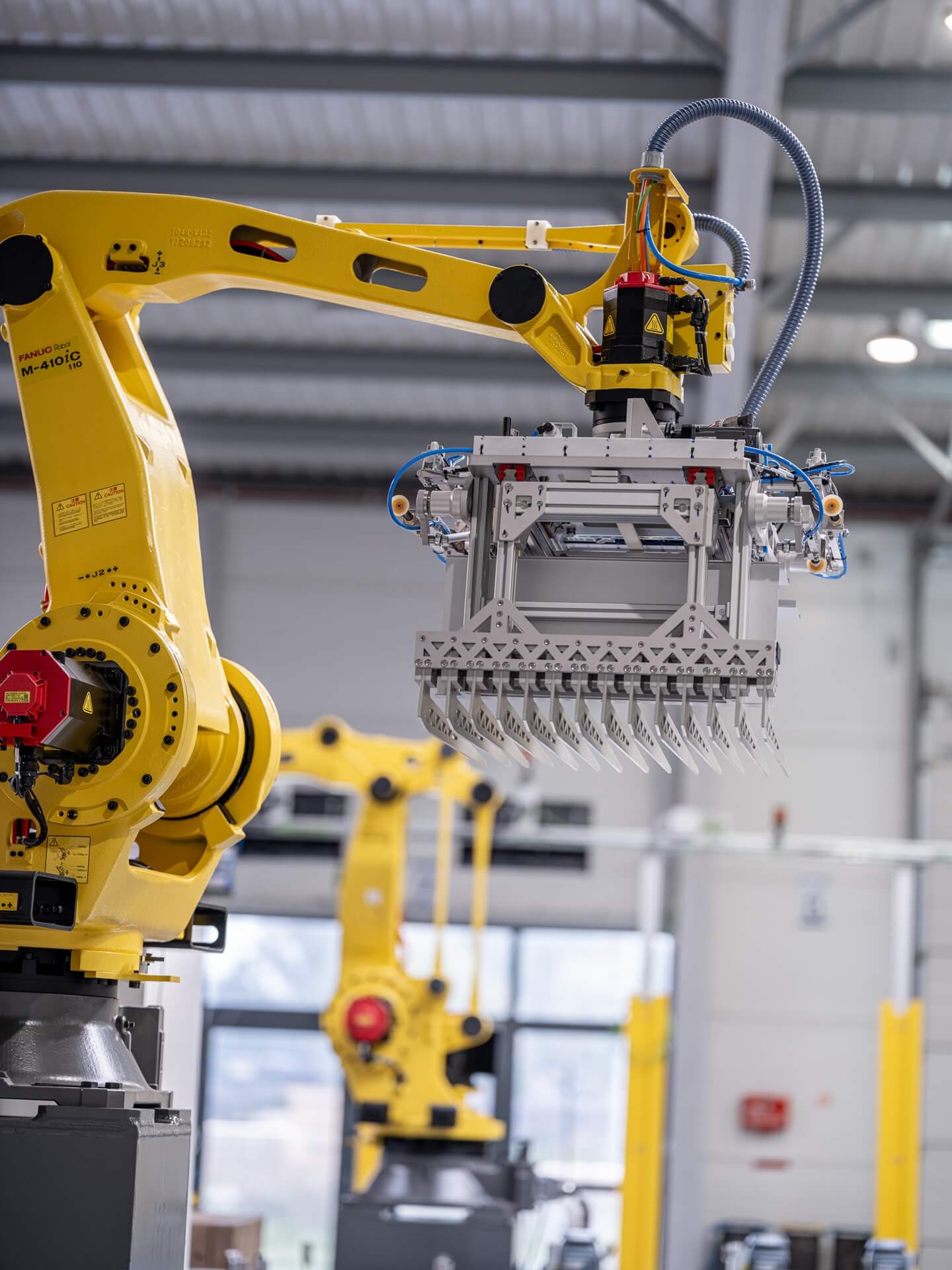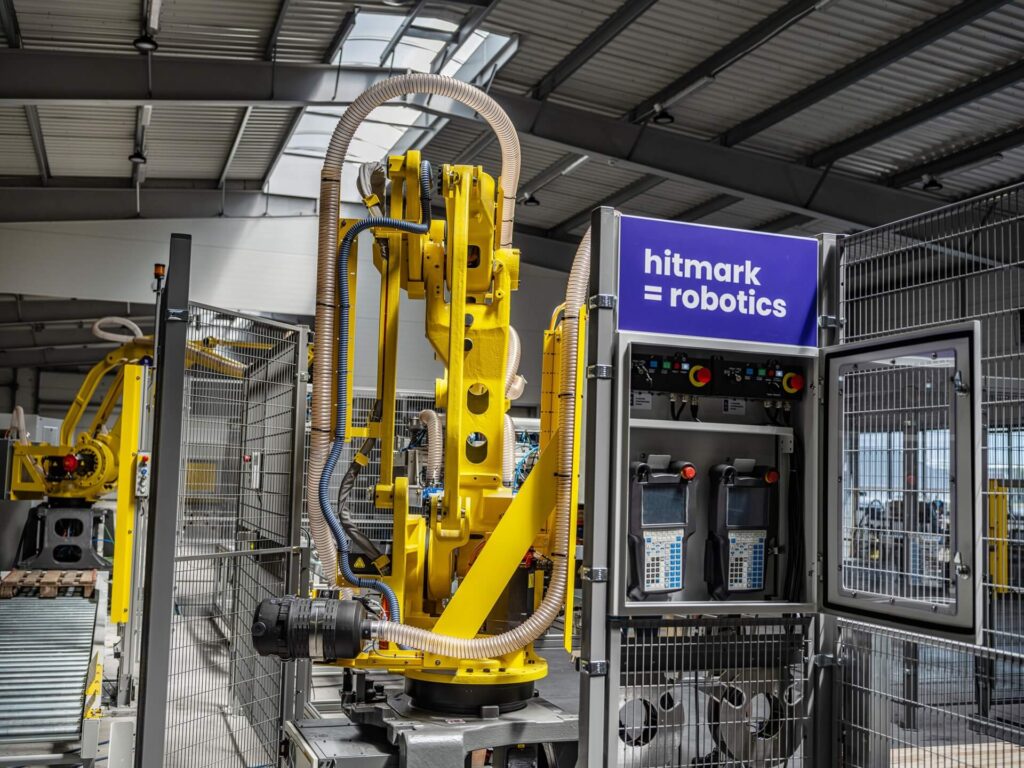
In recent years, cobots (collaborative robots) and industrial robots have gained immense popularity across various industries. While both solutions aim to automate production processes, they differ significantly in how they operate and their applications. A cobot is designed to work safely alongside humans, which means its construction and software minimize collision risks. With advanced sensors and intuitive software, cobots can dynamically adjust their movements to the presence of workers, making them ideal in environments where human-machine collaboration is essential.
An industrial robot, on the other hand, is designed to perform heavier and more precise tasks, often in isolated production areas where human involvement is kept to a minimum. Their high power and precision make them perfect for tasks where efficiency and repeatability are critical, such as assembling components on production lines or precision material processing. The choice between a cobot and an industrial robot depends on the nature of the work – if close collaboration with humans and flexibility in adapting to new tasks is needed, a cobot will be the ideal choice. For tasks requiring strength and speed, an industrial robot is more efficient.
Collaborative robots in industry represent a revolution that enables businesses to increase efficiency while maintaining operational flexibility. Thanks to their design, which is adapted for direct collaboration with humans, cobots can be implemented in environments where traditional automation would be too costly or complex. Their versatility makes them an excellent choice for short-run operations, where frequent product changes require quick machine retooling.

Furthermore, cobots relieve workers from monotonous tasks such as sorting products or moving lightweight items. This allows employees to focus on more creative and valuable tasks, which increases job satisfaction and reduces employee turnover. Cobots also introduce new possibilities for process optimization, enabling smoother resource management and faster responses to changing market needs.
With advanced machine learning technology and environmental adaptation capabilities, cobots can analyze production data and optimize their actions in real time, which is crucial in dynamically changing industrial conditions. It is this ability to immediately adjust that makes collaborative robots a symbol of modern automation and they are increasingly used not only in production but also in warehouses and logistics centers.
One of the greatest advantages of cobots is their ability to work in direct contact with humans. This is why they are often seen as symbols of modern automation. The main benefits of cobots in automation are their flexibility – they can perform a variety of tasks, from simple operations to more complex activities, without the need for programming from scratch. This allows them to be quickly integrated into new processes, which is particularly valuable in fast-growing companies where flexibility offers a competitive edge.

Moreover, cobots are known for their intuitive operation, meaning employees do not need extensive training to begin working with them. This results in savings of both time and costs. Thanks to advanced sensor systems, cobots can adjust their strength and speed to the environment, making them safer than traditional industrial robots. This reduces the risk of accidents and work interruptions, which is crucial for maintaining production continuity.
Cobots are used in both small and large enterprises, where their ability to safely interact with humans fosters more harmonious collaboration between technology and people. In this way, they help create a work environment where innovation meets employee well-being, which translates into better performance and greater team satisfaction.
The decision between choosing a collaborative robot and an industrial robot largely depends on the specifics of the production process and the goals the company aims to achieve. Cobots are ideal in environments where rapid changes and flexibility are a priority, particularly in companies that need to frequently change their production processes. Because they can work safely side by side with humans, cobots excel where synchronization between machines and people is necessary. They can be quickly adapted to new tasks, making them a valuable tool in places with fluctuating production and low volumes.

An industrial robot, on the other hand, is the ideal solution for companies that prioritize machine strength and durability. It performs well in demanding environments where precision is key, as well as in processes requiring continuous work over long periods. The industrial robot's arm is capable of performing complex tasks with high repeatability, making it indispensable for assembly or material processing, where minimizing errors is crucial for product quality.
Ultimately, the choice between a cobot and an industrial robot is not just about costs, but also about the company’s long-term development strategy Cobots allow quick reactions to market changes and increase efficiency where human-technology collaboration is key. Meanwhile, industrial robots ensure stability and performance in mass production. Each technology brings unique benefits, and their application depends on how a company aims to shape its competitive edge in the market. . Każda z tych technologii przynosi unikalne korzyści, a ich zastosowanie zależy od tego, jak firma chce kształtować swoją przewagę konkurencyjną na rynku.